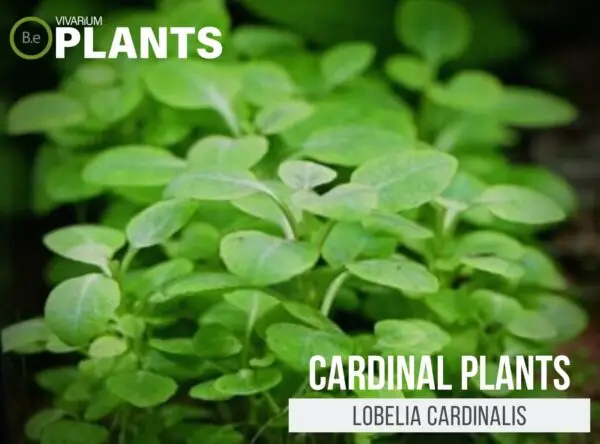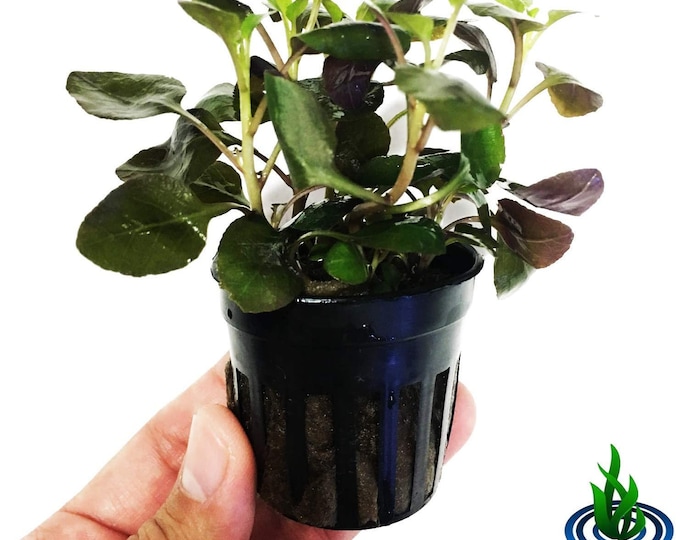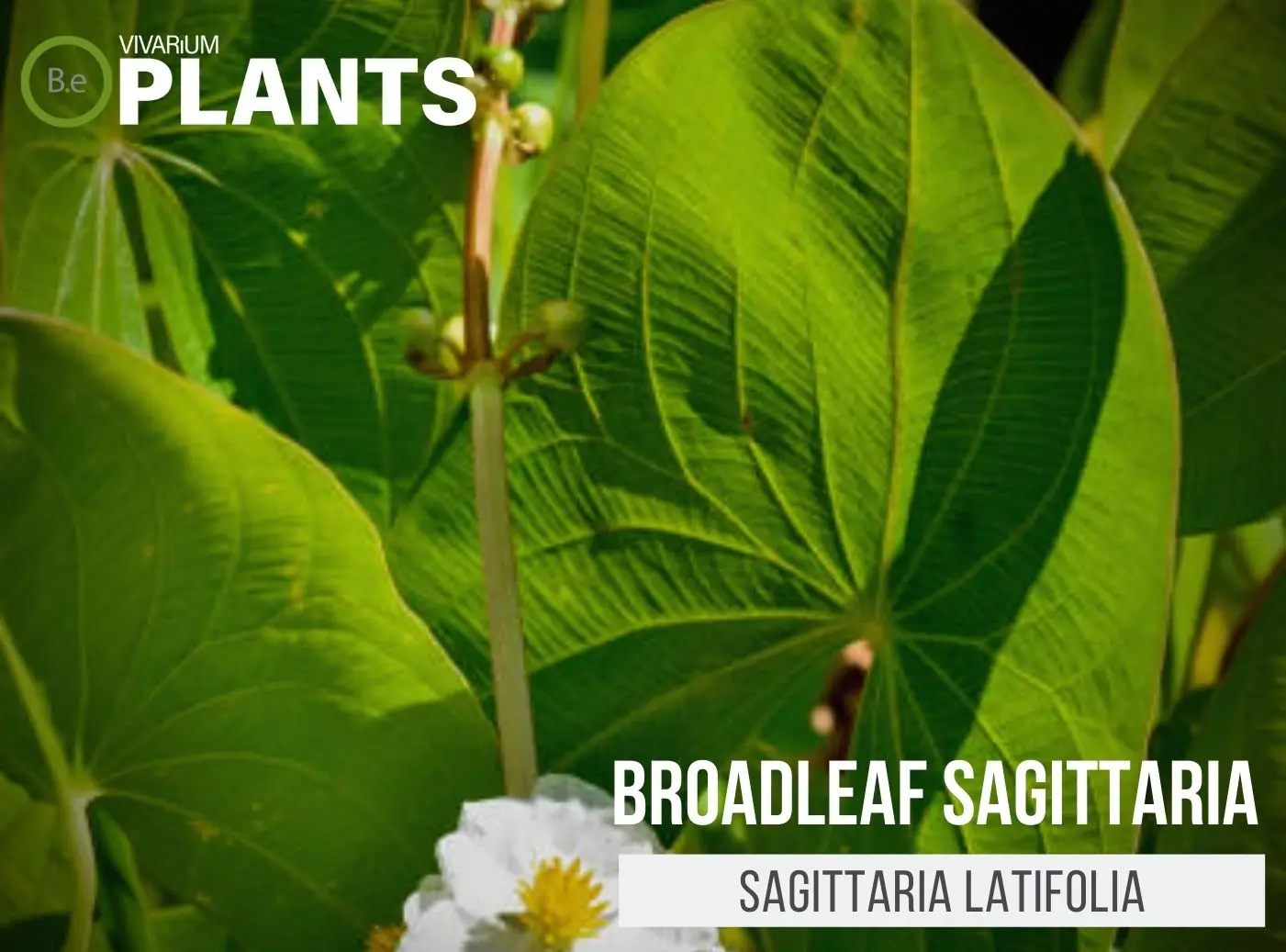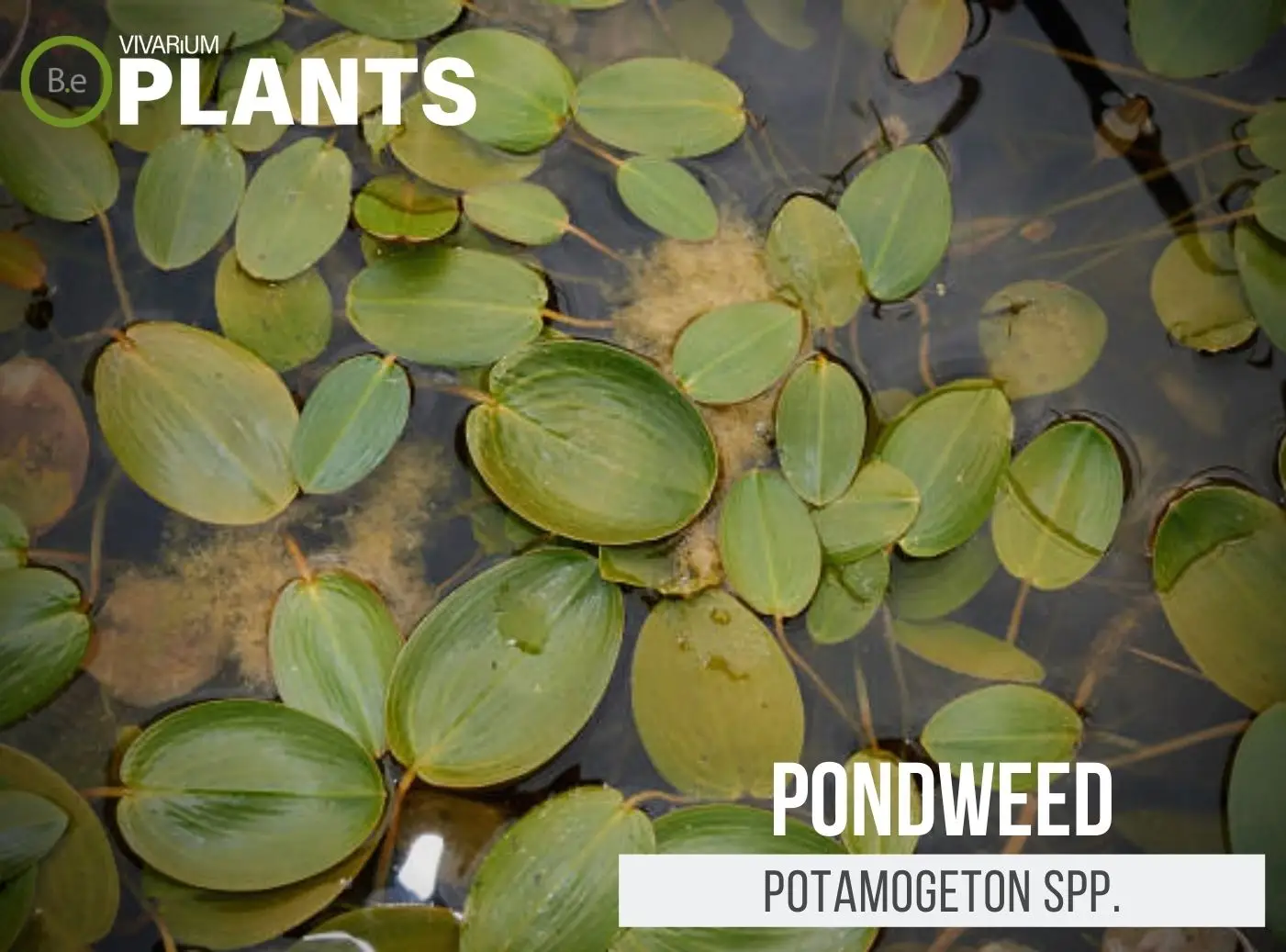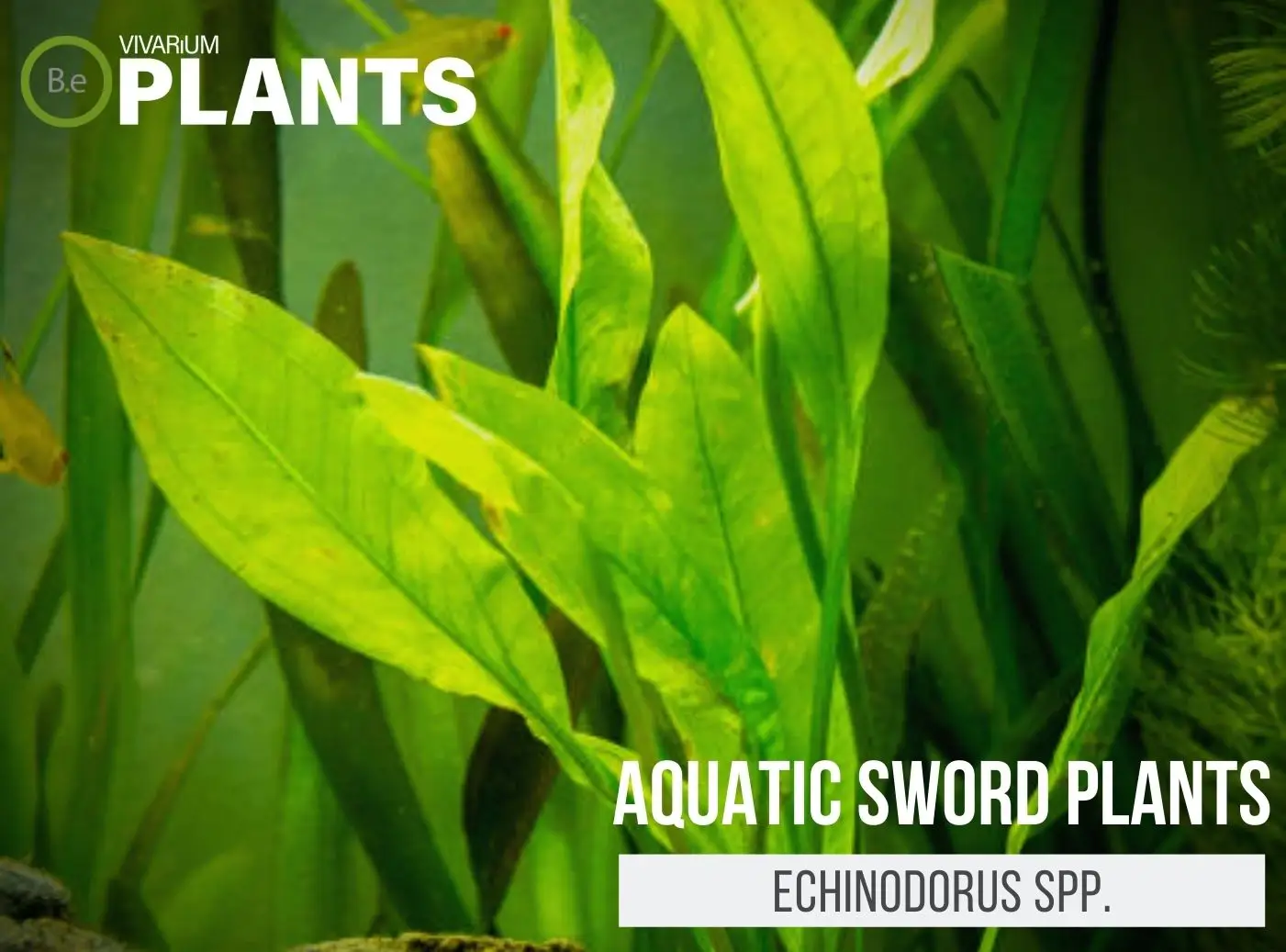The Aquatic Cardinal Plant, scientifically known as Lobelia cardinalis, is a great aquarium plant to consider for enclosures with or without animals.
It‘s an ideal marginal plant for those looking to add vibrant color and texture to their tanks.
Cardinal Plant has a low maintenance requirement and is considered a beginner–level plant to care for.
As a submersed or semi–submersed plant, this flower will most commonly be used in aquatic vivariums that are homes to frogs, fish, and more.
Table Of Contents:
ToggleWhat Is Cardinal Plant?
Cardinal Plant, or Lobelia cardinalis, is a submersed or semi–submersed aquatic plant species native to North America.
This species is often found growing in still or slow–moving bodies of freshwater such as ponds, lakes, rivers, and more.
This unique showy plant produces stunning red or purple blooms that are a great addition to just about any water garden.
The plant itself can grow on submerged wood or in the substrate while stretching its stems up to 3ft in length.
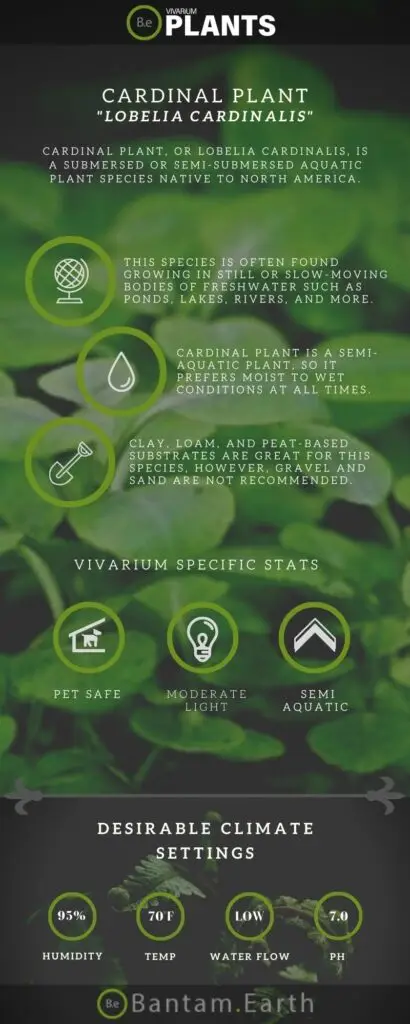

Cardinal Plant Facts
Lobelia cardinalis is a great showy plant unlike any other. This plant is often used to attract hummingbirds and other wildlife due to its eye–catching blooms.
Lobelia is a native plant species that adapted to late summer heat and drought before the Great Lakes region came about.
When given the correct care, this plant can flower almost all year round.
Description
Cardinal Plant has beautiful 1–1.5“ flowers with deep red or purple coloration and yellow stamens.
Its leaves are deep green, shaped like a lance, and may reach a length of up to 6“.
This species is a perennial and grows from an underground stem that can reach up to 18“ deep if kept in moist soil.
Habitat
Cardinal flower grows in freshwater habitats in the North–Central and North–Eastern regions of the United States.
This plant can be found growing in calm, still, or slow–moving bodies of water such as ponds, lakes, rivers, and streams.
pH Preference
The Lobelia cardinalis prefers pH levels around 6.5 to 7.5 in order to thrive.
Cardinal Plant does best in an environment with just the right amount of acidity and alkalinity.
Too low of a pH level can cause stunted growth and a decrease in color, while too high of a pH level can cause the plant to wilt and die.
Vivarium Type
The Cardinal Plant is quite an easy-going species. With that in mind, it will not be too complicated when it comes to choosing the type of enclosure it is grown in. It is best to try and replicate the plant’s natural habitat as much as possible.
Doing so will make it easier to provide this foliage plant with its basic needs. The proper setup and theme of the enclosure will make a big difference to the overall look and health of the plant. Be sure to choose setups that are moist and high in humidity.
Here are recommended vivariums it will do well in:
- Paludariums – Half aquatic/ half terrain-based enclosure.
- Ripariums – Mostly aquatic-based enclosures with some terrain features present.
- Aquarium– Fully aquatic-based enclosure with little to no dry terrain.
Vivarium Placement
Cardinal Plant is best placed in a semi–aquatic vivarium, although it can work well in other types of vivariums as long as it is kept wet.
This plant should be placed in the foreground or background of the vivarium and not directly in the center.
It can be used as an accent plant, a background plant, or even a carpeting plant.
Substrate
Cardinal flower will do well planted in many types of aquatic substrate, though it does best in rich soil with plenty of organic matter.
Clay, loam, and peat-based substrates are great for this species, however, gravel and sand are not recommended.
The substrate should be placed 1–2“ deep with the root system just below the surface.
Lighting
This plant does best with lighting of around 3000–6700k, simulating natural sunlight.
The aquarium lights should be at least 10 inches above the substrate to prevent burning the leaves.
Buy Cardinal Plant
When it comes to buying Lobelia cardinalis, there are a few things to keep in mind. Making sure the plant is healthy when purchased is essential for its success in a vivarium or pond. Vegetation that is already in poor conditions will have a very hard time adjusting to new environments.
Click the image below to find out more about the current price and other relative info about this plant.
Cardinal Plant Care & Propagation
The Cardinal Plant is an easy plant to propagate, as it can be divided into clumps of new plants or grown from cuttings.
Always try to trim off any dead or dying leaves and take care to not over–fertilize.
To create a stunning display, it is recommended to plant a few of the same species in groups or to mix and match a few other species to add contrast and color.
How To Grow
To successfully grow a cardinal Plant, it‘s important to ensure proper conditions are met. The substrate should not be dry and should receive proper aeration.
The pH levels should be between 6.6–7.6 and the temperature between 65–75°F to ensure optimal growth.
When propagating, use a sharp, clean pair of scissors to cut off 4–6 inch cuttings from the main plant. Plant these into the substrate and keep them moist until new growth appears.
Water Requirements
Cardinal Plant is a semi–aquatic plant, so it prefers moist to wet conditions at all times.
To keep the substrate consistently wet, make sure to water the substrate from the top every day or every other day.
If the substrate is completely wet, make sure to increase aeration around the roots of the plant.
Plants Similar to the Cardinal Plant
Adding diversity to an enclosure is key to an aesthetically pleasing setup. Try mixing up the look of your vivarium with different flora that can easily co-exist in the same types of environment.
Furthermore, if for some reason you find the Cardinal Plant hard to acquire or would like to consider something similar to this aquarium plant… Here are other marginal plants you might find will do well with or in place of Lobelia cardinalis:
Conclusion
In conclusion, the Cardinal Plant is a great plant to have in semi–aquatic or aquatic vivariums.
Its beautiful blooms attract wildlife and its easy care makes it a great choice for beginner and experienced hobbyists alike.
A few added cardinal flowers in a vivarium can really bring it to life and give it that added wow factor.
Keep in mind that it‘s important to provide proper lighting, moisture, and a pH level of 6.5–7.5 for optimal growth.
Frequently Asked Questions
To grow Lobelia cardinalis in an aquarium, keep the water temperature between 72 and 84°F, use a substrate with a neutral pH, and plant the Lobelia in well–lit areas. Provide iron–rich nutrients and plenty of CO2 to maintain healthy growth. Monitor the water parameters regularly to maintain a balanced aquarium.
No, Lobelia cardinalis does not need CO2 to survive. It can thrive in an aquarium without added CO2.
Yes, Lobelia cardinalis is relatively easy to grow and does not require much effort. It is well–suited for aquarists of all levels of experience and is able to thrive in a range of different climates and conditions.
Yes, Lobelia cardinalis does spread. It reproduces by seed, which can travel in many different ways if conditions are right. The plant‘s rhizomes (underground stems) can also spread and propagate.
Yes, lobelia is toxic to fish. Ingesting lobelia can cause poisoning symptoms such as gasping, lethargy, appetite loss, and ultimately death in fish.
Lobelia cardinalis requires a minimum of 5 hours of direct sunlight each day.
To take care of an aquatic cardinal plant, make sure you plant it in a pot with a container tray filled with pebbles and water. Keep the water level at about ½ to 1 inch above the pot‘s surface. Provide adequate lighting for the plant, either by keeping it in an environment that gets several hours of bright, indirect sunlight or by using artificial lighting such as fluorescent or LED. Additionally, feed your aquatic cardinal plant a liquid fertilizer every two weeks and water it with fresh water every one to two weeks.
